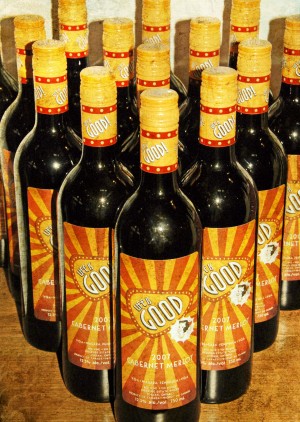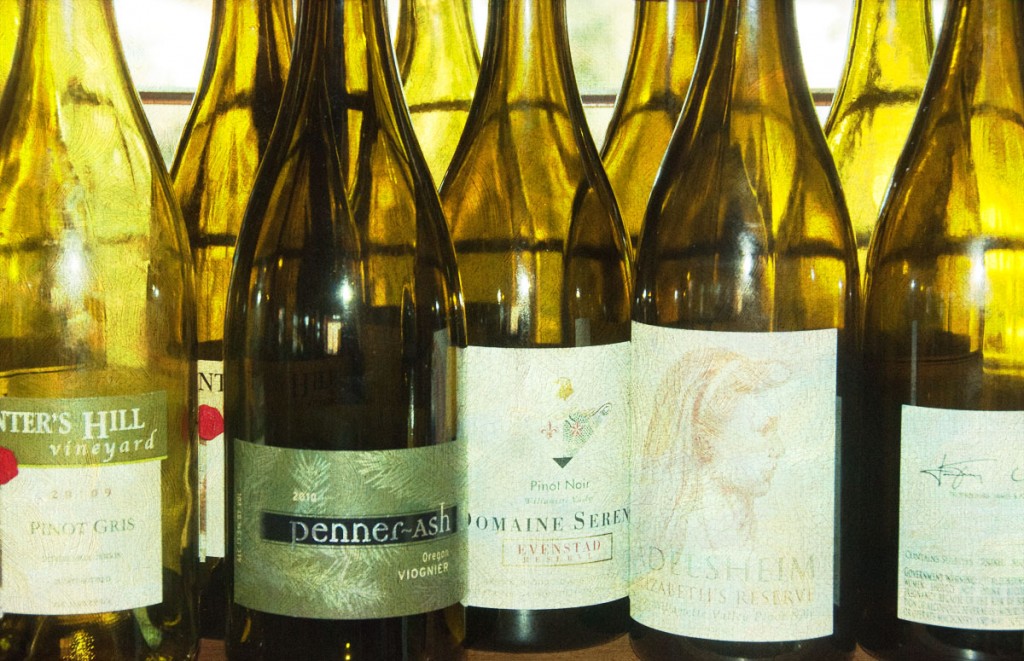
“Life is like a box of chocolates. You never know what you’re gonna get.” ~ Forrest Gump True, wise words from Mr. Gump.
I recently returned from a fabulous trip to the great State of Oregon, home to some of the best wines in the world, especially Pinot Noir. Winemakers are farmers at heart, who have a passion for growing and nurturing grapes in order to produce the best and most flavourful wine.
It got me thinking that life is also like a bottle of wine.
And we are like the winemakers of our own lives. If we are to bring out the best in ourselves, we just might learn something from the process of making wine.
Here’s what I know about making wine – the Cliffs notes version.
 A good bottle of wine starts with outstanding grapes. To grow grapes requires the right site. Factors such as weather conditions, soil, water, pests, etc. all have to be taken into account before planting the vines.
A good bottle of wine starts with outstanding grapes. To grow grapes requires the right site. Factors such as weather conditions, soil, water, pests, etc. all have to be taken into account before planting the vines.
Once planted, the winemaker must nurture the plant according to the external conditions presented. Irrigation, protection from frost and pests, fertilization and vine pruning are decisions made along the way.
Here’s where the box of chocolates part comes in. The winemaker never knows exactly what he or she will get from Mother Nature and must adapt accordingly.
* The vines must develop a strong root system. This may require several years of cultivation before harvesting a single crop.
* Vines must be nurtured such that they are able to withstand the onslaught of pests and disease, drought and floods.
* Vines must be regularly pruned to produce the best fruit. Too much pruning will result in a small crop. Too little will result in low quality fruit. Untended vines are not given enough room to allow the sun and rain to do their work.
* As the grapes flower and ripen, the winemaker must be vigilant about birds and other prey eating the fruit. Sometimes, other crops are planted between the vines to provide food for these creatures.
* Grapes ripen according to the environmental conditions and the actions of the winemaker. The decision to harvest is decided by the winemaker according to the sugar content of the grapes.
* Grapes are harvested as quickly as possible when at premium ripeness.
But this is only the beginning of the winemaking process.
* The grapes are then crushed, with stems, skin, and seeds removed according to the type of wine being made. The resultant juice (and skin and seeds if required) is then poured into fermenting tanks.
* Yeast may be added to the juice for fermentation. The yeast digests the sugar in the juice and produces carbon dioxide and alcohol (wine).
* The wine is then poured into barrels for the aging process. Unnecessary debris falls to the bottom of the barrel. Wines are moved from barrel to barrel several times and the debris is removed each time.
* When the wine is ready it is bottled, yet still needs more aging before it’s ready to drink.
* When aged sufficiently for drinking, it’s ready to sell, although it is still considered a “young” wine. The discerning wine buyer may age it considerably longer to bring out its full flavour.
What can we learn about life from the winemaking process?
 The grape stage is like our childhood, although it can extend into adulthood before we fully ripen. To develop, we need yeast (education, knowledge, mentoring) and fermentation (experience).
The grape stage is like our childhood, although it can extend into adulthood before we fully ripen. To develop, we need yeast (education, knowledge, mentoring) and fermentation (experience).
Like the winemaker, we need patience, cultivation, and nurturing to bring out our best gifts. This can come from others and/or from ourselves. How we were raised and the environment we grew up in will determine the inner resources needed to survive and grow. See my interview with Cheryl Lynn May for an example of this.
By developing strength and skills, we learn resilience, the ability to withstand the unpredictable circumstances of life. We’re influenced by others and our environment than we realize, for good or ill. Yet, as the winemaker, we can control that influence to a certain extent, and we can control our reactions to the unpredictability. At the same time, we must be gentle with ourselves and extremely self-aware; realizing that we are evolving beings that sometimes makes mistakes.
Our times of maximum contribution can ebb and flow. During the ebbs, we are adding yeast and fermenting or evolving into our next work.
Where are you in the winemaking process?
strong>Related Reading:
So interesting!
“We need to develop strength and skills to withstand the unpredictable circumstances of life. We are much more connected to the influence of others and our environment than we realize, for good or ill. Yet, as the winemaker, we can control that influence to a certain extent, and we can control our reactions to the unpredictability.”